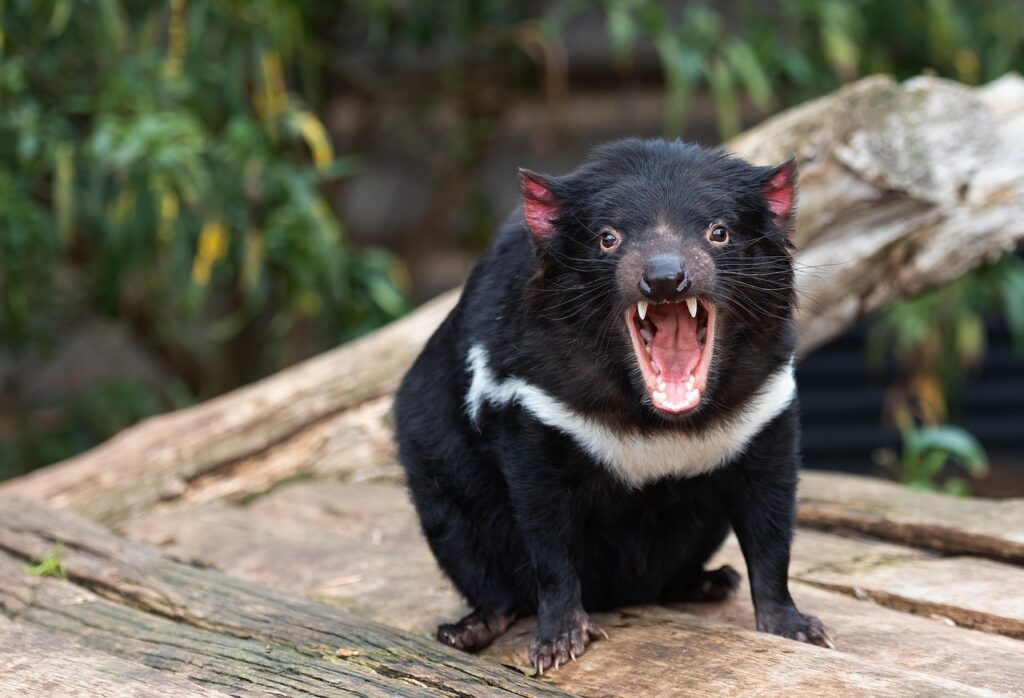Tasmania

Tasmanian Devil
Tasmania feels like a secret the Earth never meant to share. Cool air. Quiet forests. Rocks older than memory. And under it all, a sense that something is watching — not threatening, just aware. This isn’t the kind of wild that jumps out. It waits. Moves softly. Leaves signs: a print in the mud, a rustle in the bracken, the smell of wet fur on wind.
Separated from mainland Australia for thousands of years, Tasmania evolved like an echo — similar, but not quite the same. Here, species held on long after they disappeared elsewhere. The devils are still here. The bettongs, the quolls, the pademelons. Even the forests feel different: denser, darker, and somehow… older.
A Landscape That Doesn’t Perform
Tasmania doesn’t sell its wildness. It lets it unfold. You walk a trail, and the air smells like moss and myrtle. You stop, and a wallaby watches you — not afraid, just curious. At night, more eyes blink back. A bandicoot scurries. A devil screams. The stars press down hard, and the world shrinks to breath and leaf and shadow.
Where to Feel the Wild (Not Just See It)
Species That Seem to Belong to the Past
Night Is When It All Begins
Tasmania’s wild is mostly nocturnal. You learn quickly to listen after dark. To spot eyeshine. To walk slowly, not out of fear — but out of respect. The forests are alive with unseen footsteps. The grass rustles. The air cools. And for a few quiet hours, you’re not just a visitor. You’re part of it.
Final Reflections
There’s something about Tasmania that stays with you. Maybe it’s the devils, the mist, the trees that creak without wind. Maybe it’s the stillness, or the knowledge that this place still remembers what untouched feels like. Whatever it is, it follows you — like a shadow. Not heavy. Just present. A reminder that wildness doesn’t always have to shout. Sometimes, it just has to survive.
Separated from mainland Australia for thousands of years, Tasmania evolved like an echo — similar, but not quite the same. Here, species held on long after they disappeared elsewhere. The devils are still here. The bettongs, the quolls, the pademelons. Even the forests feel different: denser, darker, and somehow… older.
A Landscape That Doesn’t Perform
Tasmania doesn’t sell its wildness. It lets it unfold. You walk a trail, and the air smells like moss and myrtle. You stop, and a wallaby watches you — not afraid, just curious. At night, more eyes blink back. A bandicoot scurries. A devil screams. The stars press down hard, and the world shrinks to breath and leaf and shadow.
Where to Feel the Wild (Not Just See It)
- Southwest Wilderness: Untracked, untamed, and almost untouched. This isn’t a national park. It’s a wild region where few go and fewer stay. Perfect for those who want silence — and what lives inside it.
- Cradle Mountain–Lake St Clair: Alpine meadows, mirrored lakes, and a rhythm that shifts between mountain mist and marsupial footsteps. Wombats graze like cows. Devils leave trails in the snow.
- Bruny Island: Seabirds nest in cliffs. White wallabies bounce across farmland. The ocean crashes just meters from dense, green undergrowth alive with movement.
- Tasman Peninsula: Sheer cliffs, sea caves, and the long cry of coastal raptors. You’re never far from water here — or the creatures that travel it.
- Maria Island: A quiet, car-free sanctuary where wildlife rules. Kangaroos, wombats, and Cape Barren geese walk the paths. You’re the visitor. They’ve been here longer.
Species That Seem to Belong to the Past
- Tasmanian Devil: Misunderstood and oddly charismatic. Loud at night, shy by day, and tougher than they look. Still battling disease, still fighting to remain wild.
- Eastern Quoll: Spotted, secretive, and often overlooked. But sharp, alert, and essential to the balance.
- Bennett’s Wallaby & Tasmanian Pademelon: Smaller, quieter cousins of kangaroos. Common, but no less magical when they appear in morning fog.
- Wombat: A bulldozer in fur. Calm, stubborn, and somehow deeply comforting. Their burrows are carved with purpose.
- Swift Parrot & Orange-bellied Parrot: Rare, brilliant, and barely holding on. Each sighting is both a joy and a reminder of what’s at stake.
Night Is When It All Begins
Tasmania’s wild is mostly nocturnal. You learn quickly to listen after dark. To spot eyeshine. To walk slowly, not out of fear — but out of respect. The forests are alive with unseen footsteps. The grass rustles. The air cools. And for a few quiet hours, you’re not just a visitor. You’re part of it.
Final Reflections
There’s something about Tasmania that stays with you. Maybe it’s the devils, the mist, the trees that creak without wind. Maybe it’s the stillness, or the knowledge that this place still remembers what untouched feels like. Whatever it is, it follows you — like a shadow. Not heavy. Just present. A reminder that wildness doesn’t always have to shout. Sometimes, it just has to survive.
